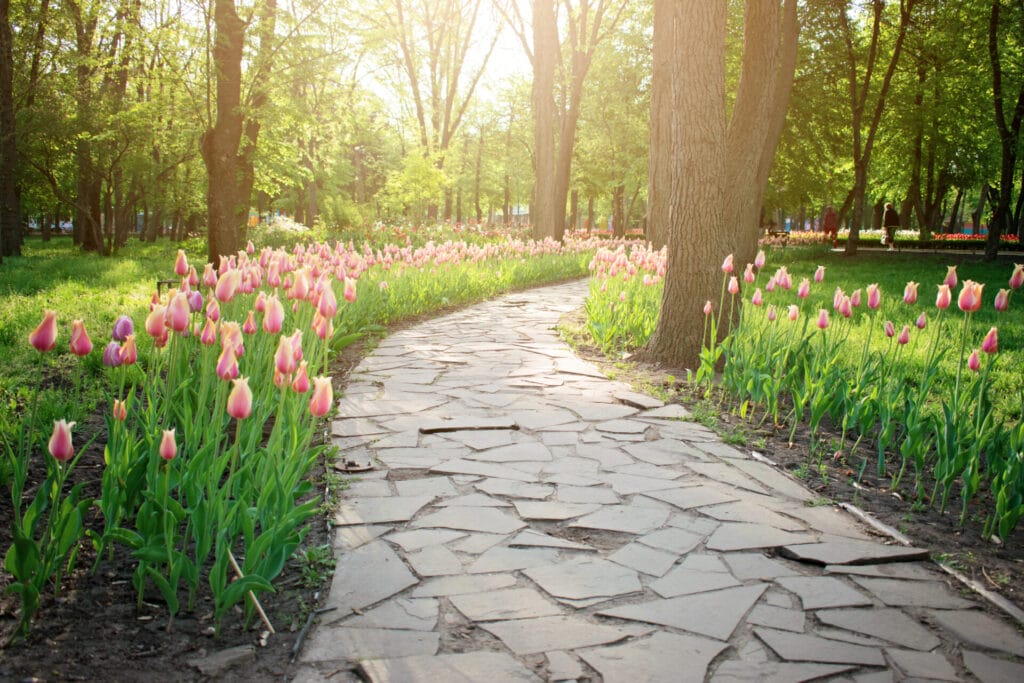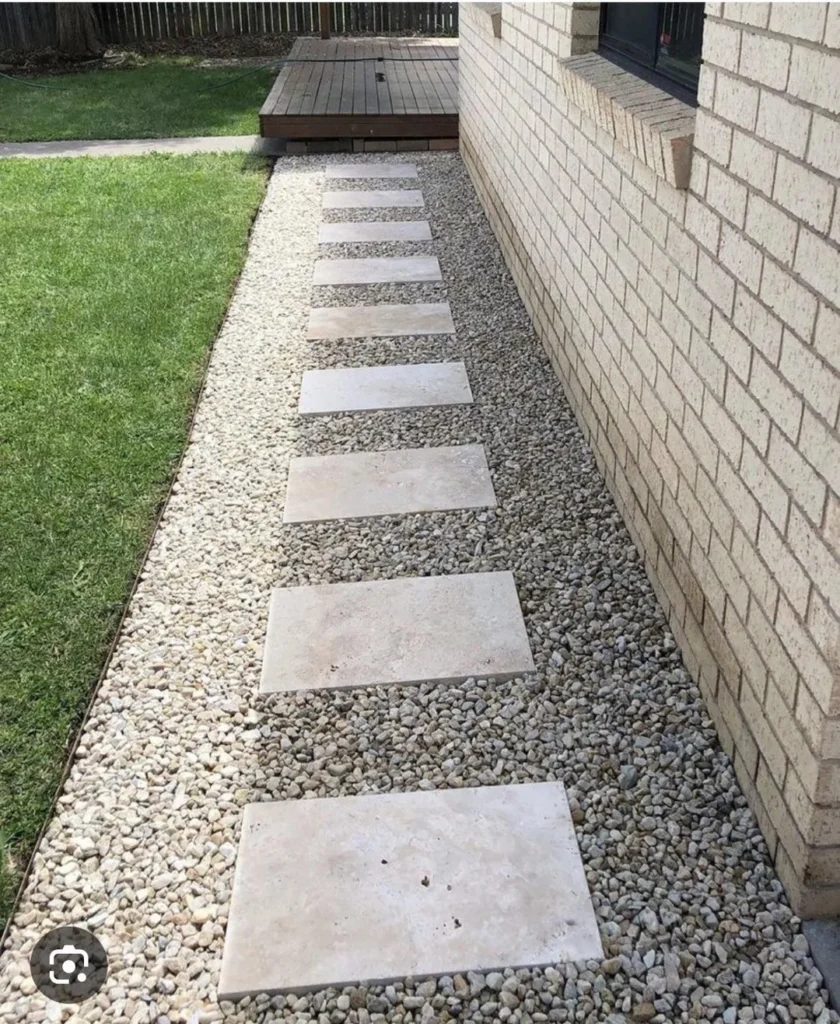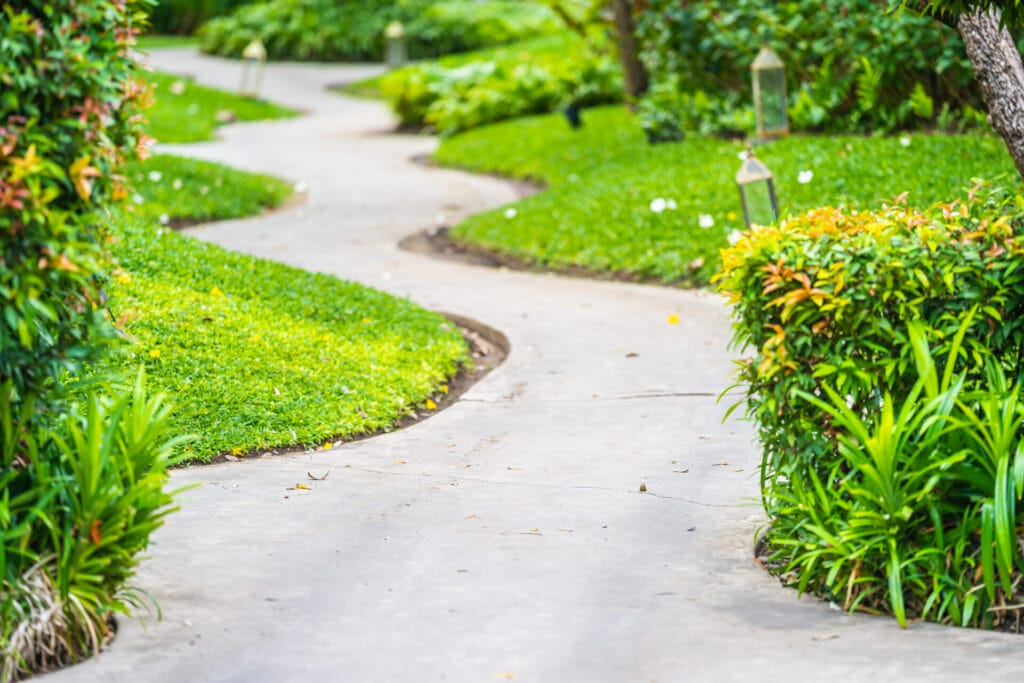Creating a visually appealing and functional yard isn’t just about plants and décor — it’s also about how people move through the space. That’s where landscape pathways come in. Thoughtfully designed garden paths can subtly guide movement in your yard, enhancing usability and improving the overall aesthetic.
In this blog, we’ll explore how to use pathways to guide movement in your yard, why they matter, and key design strategies to make your outdoor space both beautiful and intuitive.


Why Pathways Are Essential in Yard Design
Pathways serve more than a practical function — they define how people experience your garden or yard. Whether leading to a front door, meandering through flower beds, or connecting entertainment zones, paths give structure and flow to outdoor spaces.
Key Benefits:
Direct foot traffic away from delicate plants
Enhance visual appeal and symmetry
Improve safety and accessibility
Create a sense of journey and exploration
Before installing any pathway, consider where people naturally want to go. Common destinations include:
Entryways
Patios and decks
Garden beds
Water features
Sheds or utility areas
Once you’ve mapped out these destinations, you can start creating routes that connect them naturally. The goal is to guide movement in your yard by anticipating behavior and encouraging intuitive navigation.
The materials you choose will depend on your budget, the overall style of your yard, and your climate. Each material sends a different message about how the space is used.
Popular options include:
Gravel: Great for informal, cottage-style gardens.
Pavers or flagstone: Durable and elegant, ideal for structured designs.
Mulch or wood chips: Affordable and natural, great for low-traffic paths.
Stepping stones: Perfect for whimsical or minimal paths.
When selecting materials, consider how they’ll hold up over time and whether they complement your home’s exterior and landscape design.
The shape and layout of your pathway are crucial for creating a natural flow. Curved paths tend to feel relaxed and organic, encouraging exploration. Straight paths, on the other hand, are more formal and direct.
Tips for designing effective flow:
Avoid forcing sharp corners or awkward angles.
Use curves to guide attention to focal points like a flower bed or statue.
Make paths wide enough (at least 3 feet) for comfortable walking.
Consider adding lighting to maintain usability at night.
Using landscape pathways to frame or lead to key features helps create visual continuity, making your yard feel more cohesive.
Plants aren’t just decorative — they can reinforce the direction and purpose of your paths. Use low-growing plants to border pathways or tall plants to define entrances and exits.
Some great options include:
Boxwood hedges for formal edging
Lavender or ornamental grasses for fragrance and texture
Ground covers like creeping thyme to soften hard lines
Plants help signal where it’s appropriate to walk and where to stop and enjoy. This is a subtle but effective way to guide movement in your yard while maintaining a natural look.
To encourage people to use your paths, give them a reason to explore. Adding seating areas, water features, or sculptures along the path adds interest and purpose. Each element becomes a mini destination.
For example:
A bench under a tree becomes a peaceful reading nook
A birdbath invites nature watching
A pergola or arbor offers shade and a sense of arrival
By giving your paths somewhere to lead, you’re creating intentional movement throughout your outdoor space.
Your landscape pathway should be as functional as it is beautiful. That means considering:
Non-slip materials for safety
Proper drainage to prevent puddles or erosion
Smooth, even surfaces for accessibility
Regularly maintain your paths by clearing debris, trimming overhanging plants, and re-leveling stones or gravel as needed.
Final Thoughts
When done right, using pathways to guide movement in your yard transforms your space from a collection of outdoor features into a unified, livable environment. By thinking about how people move — and how you want them to move — you can create a more enjoyable and harmonious outdoor experience.
Whether you’re working with a small backyard or an expansive garden, well-placed landscape pathways are the secret to a yard that feels both purposeful and inviting.


